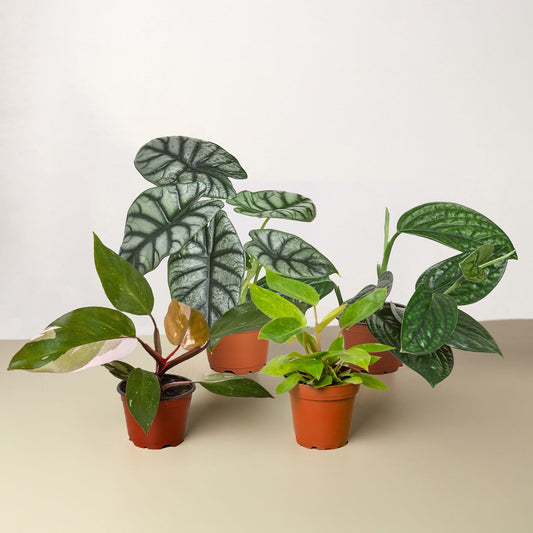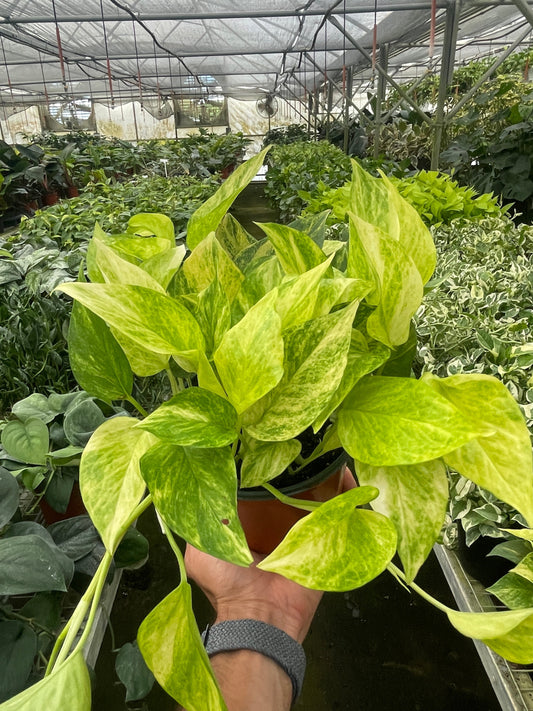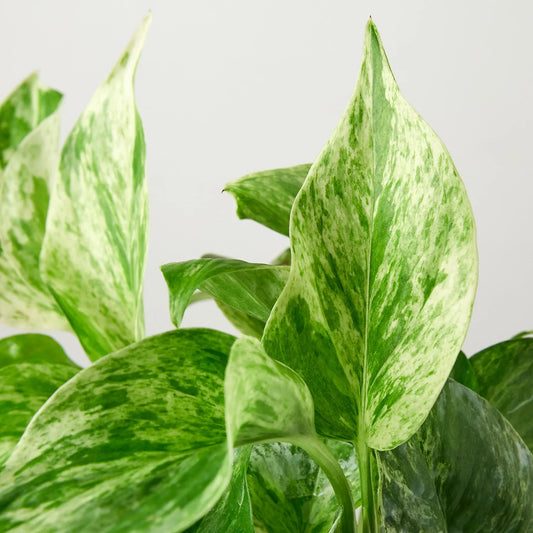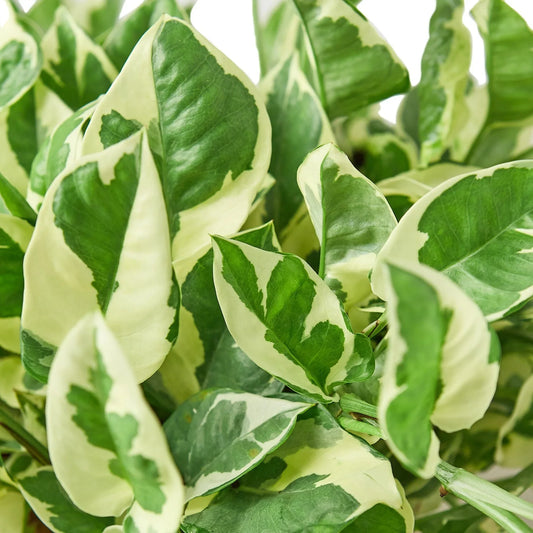Are Peacock Plants Toxic to Cats?
Cafe Planta Team
Peacock plants, with their vibrant foliage and intricate patterns, are a popular choice among houseplant lovers. But if you’re a cat owner, you might find yourself hesitating before bringing one home. After all, our feline friends are known for their curiosity, especially when it comes to nibbling on greenery.
In this article, we’ll explore whether peacock plants pose a threat to your furry companions. We’ll also cover some practical tips for caring for these plants and integrating them into your home decor without putting your pets at risk. So, let’s unravel the mystery and see how these stunning plants can coexist with your beloved cats.
Understanding the Peacock Plant
Let’s start with the basics: what exactly is a peacock plant? Officially known as Calathea Makoyana, this plant is famous for its striking leaves that resemble a peacock’s tail—hence the name. The leaves are a canvas of deep greens and purples, adorned with feather-like patterns that can make any room pop with color.
Peacock plants are native to the tropical forests of Brazil, which means they thrive in warm, humid environments. They’re part of the prayer plant family, known for their unique leaf movements. As evening approaches, the leaves tend to fold up like hands in prayer, then unfurl again with the morning light. It’s a fascinating process that adds a dynamic touch to your indoor garden.
These plants prefer indirect light and need to be kept moist but not overly wet. They’re a bit finicky about soil, preferring a mix that drains well while retaining some moisture. While not the easiest plant to care for, their beauty makes the effort worthwhile.
Are Peacock Plants Toxic to Cats?
Now, let's get to the heart of the matter: are peacock plants toxic to cats? The short answer is no, they are not toxic to cats. The ASPCA lists Calathea species, including the peacock plant, as non-toxic to both cats and dogs. This means that if your cat decides to take a little nibble, it shouldn’t cause any harm.
However, just because a plant isn’t toxic doesn’t mean it’s ideal for your pet to munch on. Eating large quantities of any plant can cause digestive upset in cats, leading to symptoms like vomiting or diarrhea. So, while you can breathe a sigh of relief knowing a few bites won't be fatal, it’s still best to discourage your cat from making a salad out of your houseplants.
In case your cat does decide to chew on your peacock plant, keep an eye out for any signs of distress and consult your vet if you’re concerned. Cats are notorious for exploring with their mouths, so it’s always a good idea to observe their behavior around new plants.
Tips for Keeping Cats Away from Your Peacock Plant
Even though peacock plants aren’t toxic, you might still want to keep your cats from turning them into a snack. Here are some strategies to keep those curious paws at bay:
- Strategic Placement: Place your peacock plant in areas that are less accessible to your cats. Shelves or plant stands can elevate your greenery out of reach.
- Use Deterrents: Cats dislike certain smells. Citrus peels or sprays, for example, can be placed around the plant to deter them. Just be cautious not to damage the plant itself.
- Provide Alternatives: Sometimes cats chew plants out of boredom. Offer cat grass or toys to keep them entertained and distracted from your prized plants.
- Training: Positive reinforcement can go a long way. Praise and reward your cat when they stay away from the plants, reinforcing good behavior.
Remember, patience is key. It might take some trial and error to find the perfect solution for your home and your pet's personality.
Caring for Your Peacock Plant
Once you’ve got your cat-proofing strategy in place, it’s time to focus on keeping your peacock plant healthy and happy. These plants can be a bit temperamental, but with the right care, they’ll thrive.
Lighting: Peacock plants prefer bright, indirect light. Direct sunlight can scorch their leaves, so a spot near a window with filtered light is ideal. If you notice the leaves are fading or curling, it might be a sign they’re getting too much sun.
Watering: Moisture is crucial for peacock plants. They like their soil to be consistently damp but not soggy. Allow the top inch of soil to dry out between waterings. It’s also important to use room temperature, filtered water, as tap water can contain chemicals that harm the plant.
Humidity: Originating from tropical environments, these plants love humidity. If your home is dry, especially in winter, you might need a humidifier or regular misting to keep the plant comfortable.
Soil: A well-draining potting mix is essential. You can create your own by mixing standard potting soil with some perlite or orchid bark to improve drainage.
Integrating Peacock Plants into Your Home Decor
Peacock plants aren’t just about aesthetics—they’re an opportunity to add a touch of nature to your interior design. Their bold patterns and colors can complement various styles, from bohemian to modern minimalism.
Consider using your peacock plant as a focal point in a room. Its vibrant leaves can draw the eye and add a splash of color to a neutral space. Pair it with pots that match or contrast with your existing decor for a cohesive look.
If you’re feeling adventurous, group your peacock plant with other non-toxic houseplants to create a mini indoor jungle. Mixing different textures and heights can add depth and interest to a room. Just be sure each plant has enough space and light to thrive.
For smaller spaces, hanging planters or wall-mounted pots can showcase your peacock plant while saving precious floor space. This can also keep the plant out of reach of your cats, providing both a stylish and practical solution.
Common Problems and How to Fix Them
Like any plant, peacock plants can run into issues from time to time. Here are some common problems and how to address them:
- Yellowing Leaves: This often indicates overwatering. Check the soil and ensure it’s not waterlogged. Adjust your watering schedule if necessary.
- Curling Leaves: This can be a sign of underwatering or too much direct sunlight. Make sure the plant is getting enough water and move it to a spot with indirect light.
- Brown Leaf Edges: Low humidity or fluoride in tap water can cause this. Increase humidity and consider using distilled or filtered water.
Regularly checking your plant for signs of stress can help you catch problems early before they become severe. Remember, even the most experienced plant parents face challenges, so don’t get discouraged!
Creating a Cat-Friendly Plant Space
If you’re a plant lover with pets, you might want to create a space that’s safe for both your plants and your furry friends. Here’s how you can design a cat-friendly plant zone:
Choose Non-Toxic Plants: Start with a selection of non-toxic plants like the peacock plant. This way, even if your cat manages to sneak a bite, it won’t be harmful.
Use Decorative Barriers: Decorative screens or open shelving can separate your plants from curious cats while still allowing you to display them beautifully.
Create Vertical Gardens: Wall-mounted plants or hanging gardens keep plants out of reach and add a dynamic element to your decor. Plus, they’re an excellent way to utilize vertical space.
Incorporate Cat-Friendly Elements: Include cat-friendly spaces and toys in your decor. A cozy cat bed or a scratching post nearby can draw your pet’s attention away from your plants.
Alternative Non-Toxic Plants for Cat Owners
If you’re looking to expand your plant collection while ensuring your cats’ safety, consider these non-toxic alternatives:
- Spider Plant: Known for its air-purifying qualities, it’s safe for cats and easy to care for.
- Bamboo Palm: Adds a tropical vibe and is non-toxic, making it a great choice for pet owners.
- Boston Fern: Adds lush greenery without posing a threat to your furry friends.
Mix and match these with your peacock plants to create a diverse and cat-friendly indoor garden. Remember, variety is the spice of life, and your home can be both vibrant and safe with the right plant choices.
Final Thoughts
Peacock plants can be a stunning addition to your home, and the good news is they’re safe for your cats. By taking a few precautions, you can enjoy the beauty of these plants without worrying about your furry friends.
At Cafe Planta, we’re passionate about helping you find the perfect plant companions for your home. Whether you’re looking for guidance on plant care or just want to chat about your plant journey, we’re here for you. Feel free to email us or follow us on Instagram to connect. We believe plants can bring joy and connection, and we're excited to help you create a thriving indoor oasis.



















